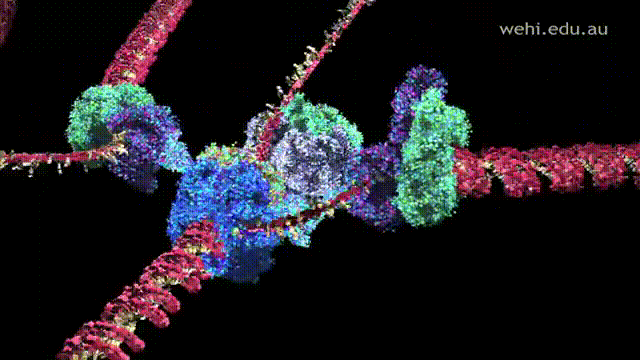A protein called gyrase first makes a small cut at both ends of the DNA strand, allowing the helicase to unwind the DNA easily. Then, a single stranded binding protein will bind with the single stranded DNA to prevent it from rebonding with its other strand. An enzyme called primase then lands on the DNA and adds an RNA primer to kickstart the DNA replication process.
Act II: Elongation
Polymerase 3 is attracted to the RNA primers that the primase left behind, and will begin to build the new daughter strand. It is important to remember that DNA can only be replicated in the 5' to 3' direction. This creates a problem at the replication fork because one parental strand is oriented 3' to 5' 5' into the fork while the other antiparallel parental strand is oriented 5' to 3' into the fork. Because of this, one side of the fork cannot replicate continuously. This can be shown in the image below.
The upper strand of parental DNA is flowing from 3' to 5' into the fork, this allows polymerase 3 to build a daughter strand 5' to 3' continuously. This strand is called the leading strand. On the other hand, the bottom parent strand flows from 5' to 3' into the fork, causing polymerase to need to build small sections at a time. These small sections are lagging strands, they are also known as Okazaki fragments.
Note that polymerase will not start building complementary base pairs on its own, it needs an RNA primer to start it off, therefore, primase still plays a role in elongation to start off all the Okazaki fragments.
Act III: Termination
After polymerase 3 has built the matching base pairs in the daughter strand, polymerase 1 goes to proofread the new strand, correcting any mistakes. Also, at this time, polymerase 1 will replace any RNA primers with DNA bases. After replacement, there is still a gap that is left between the two strands. An enzyme called ligase, a natural gluestick will go and connect the fragments together. It does this by forming phosphodiester bonds between the nucleotides.
Here's a gif of that in real life:


No comments:
Post a Comment